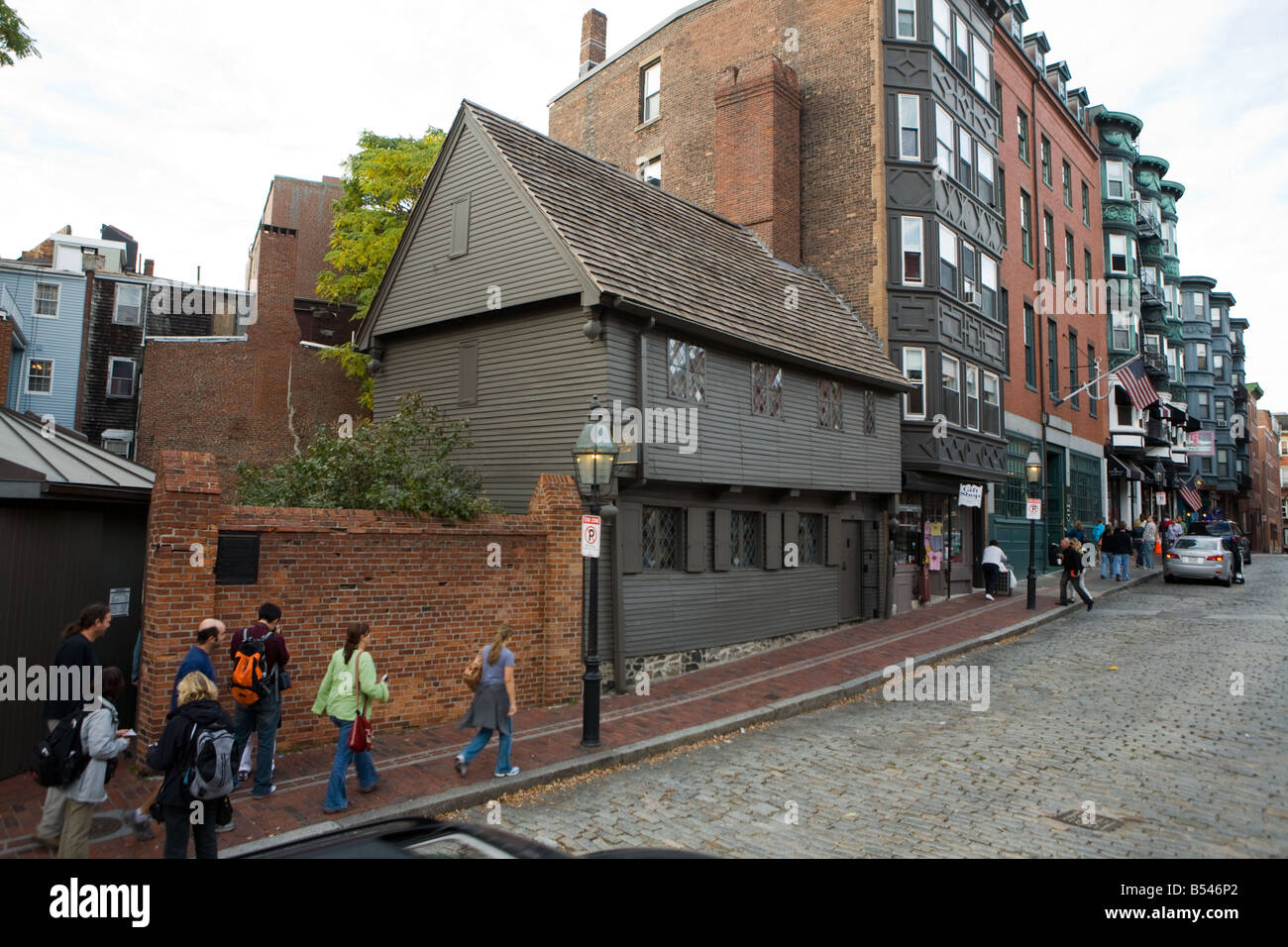Table Of Content
It is one of the last remaining 17th-century urban dwellings in the country. The house sits on the site of the former parsonage of the Second Church of Boston. This earlier building was the home of Increase Mather from 1670 until it burned in the Great Fire of 1676 and was replaced with the current building. A wealthy merchant named Robert Howard was the first to own the new house. Howard was the enslaver of a man named Samuel who lived on the property. He also enslaved a man named Frank, a woman named Catherine, and Samuel’s two children.
Old North Church
For current health & safety guidelines and other visitor information, visit Before You Arrive. Los Angeles City Cultural Heritage Commission (CHC) reviewed the Conservancy’s pending HCM nomination for this house. Through a unanimous vote, the CHC agreed to take the nomination under consideration. The City Council’s Planning and Land Use Management (PLUM) Committee voted unanimously in support of the pending Historic-Cultural Monument (HCM) nomination for the Paul Revere Williams House. In 2021, the house was listed for sale, at one point for redevelopment.
Architect
Take, for instance, an October 2007 Architectural Digest article, which opened by recounting one of Paul Revere Williams’s high school memories. USS Cassin Young is a Fletcher class destroyer built in 1943 in San Pedro, California. Serving in the Pacific during World War II, Cassin Young earned seven battle starts and survived two Kamikaze hits. Following the war, she ultimately served another decade throughout the 1950s. This was because of the overhauling and maintenance she underwent here at the Charlestown Navy Yard on several occasions. Today, she is an example of what naval shipyards like Charlestown built, repaired, and modernized during the 20th century.
Timeline
Curt Bouton and architect John Arnold have purchased the house and plan to fully rehabilitate it and honor the story of Williams’ family. The Conservancy is so thankful to Curt and John for coming to the rescue and taking this project on. We look forward to watching the progress and celebrating once it is all done and ready to be a home again.
“My Dear Girl: A Revere Letter Returns” to the Paul Revere House – NorthEndWaterfront.com - NorthEndWaterfront.com
“My Dear Girl: A Revere Letter Returns” to the Paul Revere House – NorthEndWaterfront.com.
Posted: Sat, 18 Oct 2014 07:00:00 GMT [source]
Paul Revere Williams House
Visitors can also explore the Freedom Trail® and Black Heritage Trail® on our website or with the free NPS app for iOS and Android. By the time he was 25 years old, Paul Revere Williams had met and married his wife, Della Mae Givens. In 1921, after living with Williams’ foster mother, Paul Revere and Della Williams had saved enough money to purchase their own home on East 35th Street in the West Adams neighborhood. The neighborhood was home to a large Black community, in large part because it was free of the restrictive covenants that blanketed most of Los Angeles west of Main Street.

Climb aboard the world's oldest commissioned warship afloat, berthed in the Charlestown Navy Yard. Undefeated in combat, she earned the title of "Old Ironsides" in the War of 1812. Explore one of the nation's original six Navy Yards—home of USS Constitution and USS Cassin Young.
Mapping the Enslavement History of the Freedom Trail - GBH News
Mapping the Enslavement History of the Freedom Trail.
Posted: Thu, 10 Aug 2023 19:27:44 GMT [source]
Hunting sold the Revere house the very next day to another trader, John Loring. After Howard’s death, the property passed to his wife, Elizabeth, and then their daughter, Sarah Wyborn. Sarah’s inheritance also included a house immediately to the north of the Revere House. Documentary evidence shows a 1737 application from a Mr. Yardley Lewis to set up a still in the house. Sarah sold the property to Andrew Knox, a mariner, in 1741 and it passed to his son, also Andrew. The younger Knox defaulted on his mortgage payments and the property passed to John Erving, who allowed Knox to continue living there.
Telling the Full Story
Revere’s next stop that late night was Concord, Massachusetts, a hotbed of the resistance and the suspected location of the British troops’ second attack. But Revere, Dawes and a third rider named Samuel Prescott were captured by the British en route, and only Prescott reached Concord. The silversmith was resourceful and dabbled in a range of work, taking on apprentices and workers who created specialty flatware, silver bowls, tea sets and even casting the first bell in Boston in his foundry. He turned to dentistry to augment his income when the colonial economy faltered during a recession. In March 1907, the last tenants moved out and restoration work by I.M. Bogart Co began in earnest under the direction of architect Joseph Chandler.
It is one of only 27 such bells that Revere personally would have a hand in casting at the family foundry. In the restoration, the house was put back to close to what it would have looked like in 1775. Visitors can still close their eyes and imagine the night when Revere dashed home for his coat before taking off on his famous ride. To stand in Revere’s shoes on that fateful night, visitors can still go to his house at that time. The Paul Revere House remains standing today, though it had a few brushes with destruction over the years. Revere would not have shouted ‘The British are coming,’ as portrayed in some depictions of the ride.
Small by today’s standards, it was actually one of the larger houses in the area at the time of its constructions, with large rooms, compared to other homes of that age. Within hours, as many as 40 other riders had taken to horseback to spread the word that the British planned an attack on Lexington and Concord. Revere, meanwhile, completed his ride and warned Hancock and Adams in time for them to avoid capture at the outset of what became known as the Battles of Lexington and Concord.
After Revere sold the home in 1800, the ground floor housed a series of shops, among them a candy store, a cigar factory, a bank, and a vegetable and fruit business. In 1902, Paul Revere’s great-grandson, John P. Reynolds, Jr., purchased the building to ensure that it would not be demolished, and the Paul Revere Memorial Association was formed to preserve and renovate it. By 1780 the family had moved and began renting out the North Square property. They returned to their North Square home in 1790, before Revere sold the house in 1800. In the 1800s the home became a sailor's boarding house for many years. By the beginning of the 1900s, the old house had become a tenement with shops on the lower level.

No comments:
Post a Comment